Washing machines "Baby": characteristics, device and tips for use

The Malyutka washing machine is well known to the Russian consumer and was quite popular in Soviet times. Today, against the backdrop of the emergence of a new generation of automatic washing machines, interest in mini-units has noticeably decreased. However, there are circumstances in which buying a large car is impossible, and then miniature "Babies" come to the rescue. They do their job well and are quite in demand among owners of small-sized housing, summer residents and students.
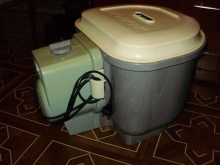
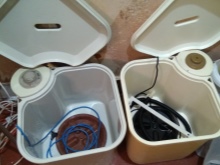
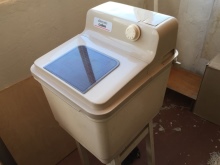
Device and principle of operation
Mini-machine for washing clothes "Baby" is a compact and lightweight device consisting of a plastic case with a drain hole, a motor and an activator. Besides, each model is supplied with a hose, a cover, and sometimes a rubber stopper.
It should be noted that the name "Baby" gradually became a household name and began to denote similar devices of different brands, the general characteristics of which were small size, lack of complex functions, an activator type design and a simple device.


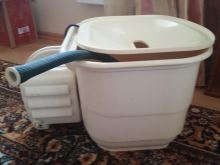
The principle of operation of mini washing machines is very simple and consists in the following: an electric motor makes a vane activator spin, which sets in motion the water in the tank, which acts as a drum. Some models have a reverse function that rotates the blade alternately in both directions. This technology prevents the laundry from twisting and prevents the fabric from stretching: the clothes are washed better and do not lose their original shape.
The wash cycle is set manually using a timer and is usually 5 to 15 minutes. There are also samples with a centrifuge, however, the washing and spinning processes take place in one drum alternately, due to which the washing time is significantly increased.
Water is poured into the "Baby" manually, and the drain is carried out by means of a hose through the drain hole located in the bottom of the case. Most mini-machines do not have a heating option, and therefore the water must be filled in hot. The exception is the Feya-2P model, which heats the water in the drum.
The design of "Malyutka" does not include filters, valves, pumps and electronics, which makes the machine as simple as possible and significantly reduces the likelihood of breakdown.
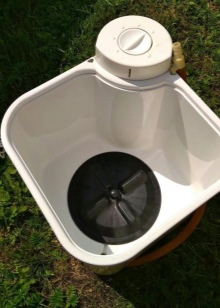
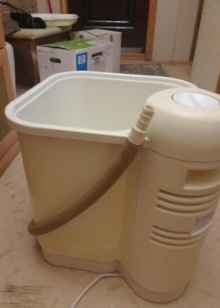
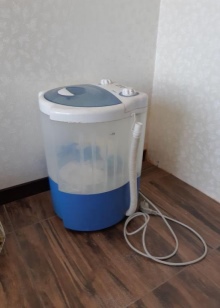
Advantages and disadvantages
Like any other household appliances, typewriters like "Baby" have both strengths and weaknesses. The advantages of mini-units include:
- compact size, allowing them to be placed in the bathrooms of small apartments and dormitories, as well as to take with you to the dacha;
- minimal water consumption and lack of connection to water supply and sewerage, which allows the use of "Baby" in uncomfortable housing;
- low weight, amounting to 7-10 kg, which makes it possible to remove the machine after washing for storage in a niche or closet, and also move it as needed to another place;
- low power consumption, allowing you to save your budget;
- a short wash cycle, which significantly speeds up the whole process;
- lack of complex nodes;
- minimum cost.
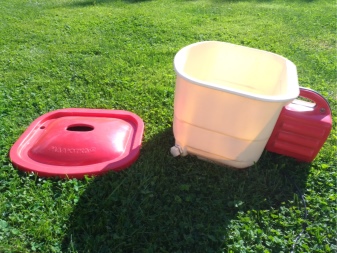
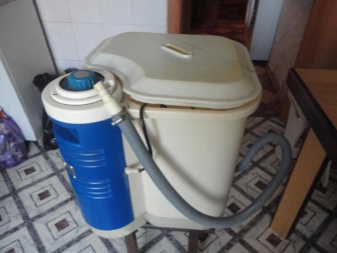
The disadvantages of "Malyutka" include the lack of heating and spinning functions for most models, small capacity, amounting to no more than 4 kg of linen, and noise during operation.
In addition, washing on activator type machines requires the constant presence of a person and much more labor costs in comparison with automatic and semi-automatic machines.
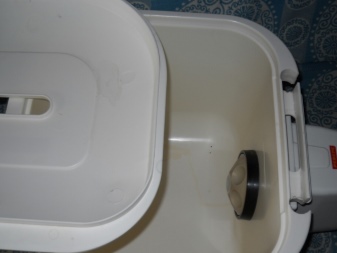
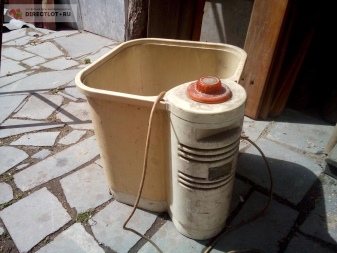
Popular models
Today, not so many companies are engaged in the production of machines of the "Baby" type, which is due to the low demand for this product. However, some manufacturers not only do not stop producing mini-units, but also equip them with additional functions, such as heating and spinning.
Below are the most famous samples, reviews of which are most common on the Internet.
- Typewriter "Agat" from a Ukrainian manufacturer weighs only 7 kg and is equipped with a 370 W motor. The wash timer has a range from 1 to 15 minutes, and the activator, located at the bottom of the case, is equipped with a reverse. "Agat" is characterized by low energy consumption and belongs to the "A ++" class. The model is produced in dimensions 45x45x50 cm, holds 3 kg of linen and does not work too noisy.
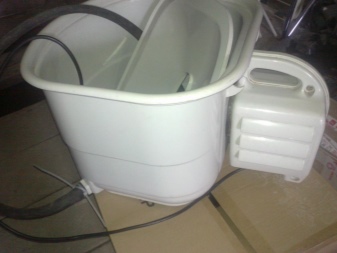
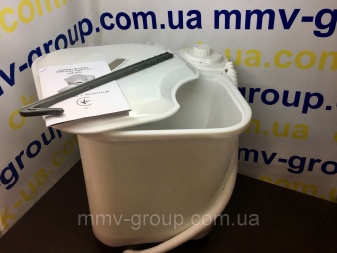
- Model "Kharkovchanka SM-1M" from NPO Electrotyazhmash, Kharkov, is a compact unit with a non-removable cover and a timer. A distinctive feature of the model is the location of the engine, which is located on top of the body; in most samples, it is located at the junction of the rear walls of the tank. This design makes the machine even more compact, allowing it to be used in small spaces.
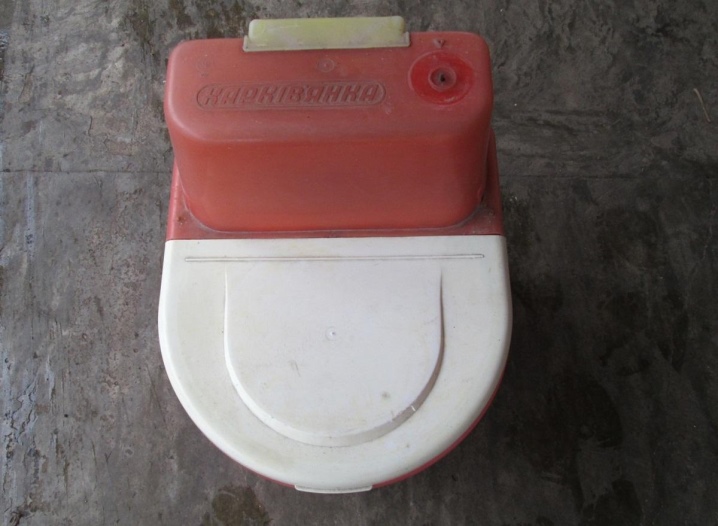
- Activator machine "Fairy SM-2" from the Votkinsk machine-building plant weighs 14 kg and is produced in dimensions 45x44x47 cm. The tank holds up to 2 kg of dirty linen, which is quite enough to serve one or two people. The body of the product is made of high quality white plastic, the power of the electric motor is 300W.
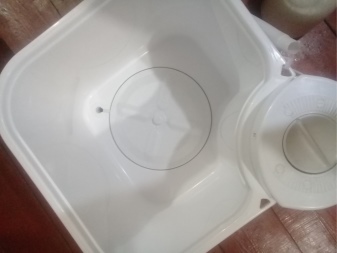
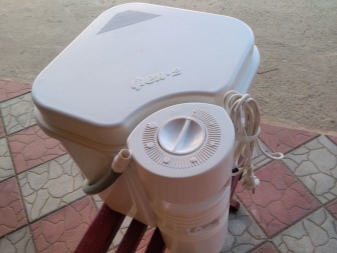
- Model with heating function "Fairy-2P" equipped with an electric heating element, which maintains the desired water temperature throughout the washing time. The body of the product is made of high-strength plastic, and the inner tank is made of composite polymers. The weight of the unit is 15 kg, the maximum load of linen is 2 kg, the power consumption is 0.3 kW / h. The options include a liquid (foam) level control and a half load mode.
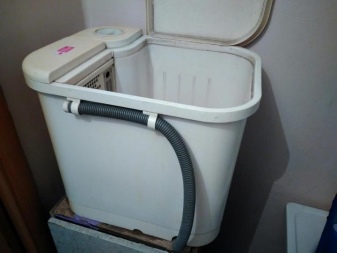
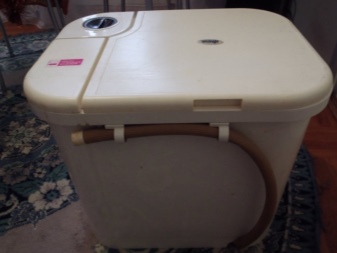
- Car "Baby-2" (021) is a miniature device and is designed for a load of 1 kg of laundry. The volume of the washing tank is 27 liters, the weight of the unit together with the packaging does not exceed 10 kg. The model will be an ideal option for a student living in a hostel or a summer resident.
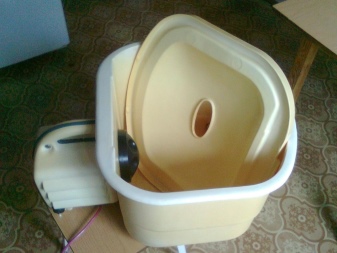
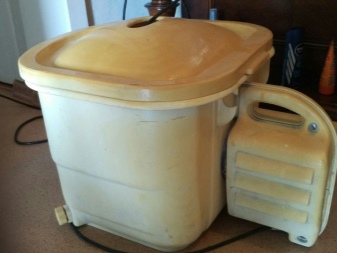
- Model "Princess SM-1 Blue" It is produced in a blue translucent case and has a small size of 44x34x36 cm. The machine is equipped with a timer with a duration of up to 15 minutes, it can hold 1 kg of dry laundry and is filled through a hose. The product is equipped with rubberized feet and a carrying handle, consumes 140 W and weighs 5 kg. The machine is equipped with a reverse and has a 1 year warranty.
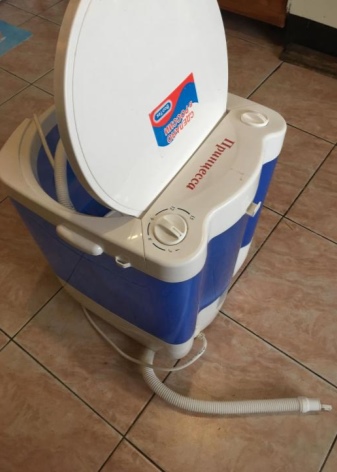
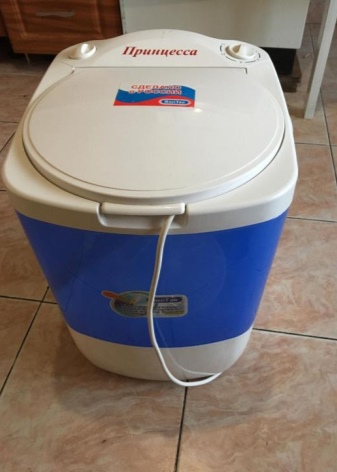
- Mini squeezer Rolsen WVL-300S holds up to 3 kg of dry linen, has a mechanical control and is available in dimensions 37x37x51 cm. The spinning is performed using a centrifuge, which is installed in the tank and is capable of rotating at a speed of 300 rpm. The disadvantages of the model include a relatively high noise level, reaching 58 dB, and the duration of the washing process.
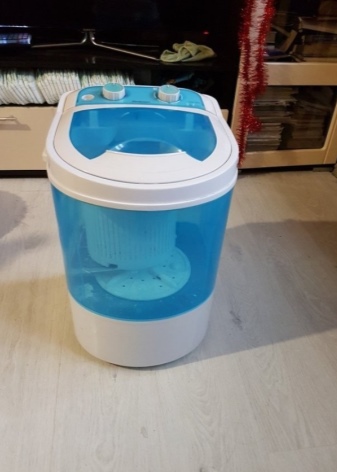
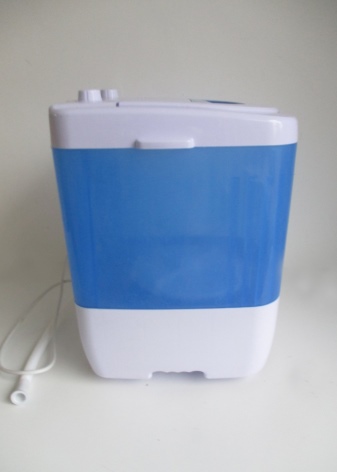
Criterias of choice
When choosing an activator machine like "Baby" there are a number of points to consider.
- If the unit is purchased for a family with a small child, it is better to choose a model with a spin function. Such models are capable of holding up to 3 kg of linen, which will be quite enough for washing children's clothes. In addition, spinning helps to dry the laundry quickly, which is quite important for young mothers.
- When choosing a car for one person, living in a hostel or rented accommodation, you can limit yourself to miniature models with a load of 1-2 kg. Such machines are very economical and do not take up much space.
- If a car is bought for a summer residence, then the spin function can be neglected, as it is possible to dry the laundry in the open air. For such cases, a unit with a water heating function is ideal, which will greatly facilitate washing at a summer cottage.
- If "Baby" is purchased as the main washing machine for permanent use, it is better to choose a model with a reverse. Such units do not tear the laundry and wash it more evenly. In addition, the main task of a home machine is to accommodate as many things as possible, including fairly large ones (blankets, bed linen), and therefore it is advisable to choose a unit with a large tank, designed for at least 4 kg of linen.
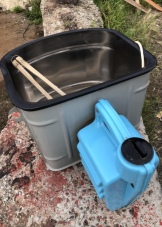
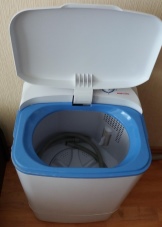
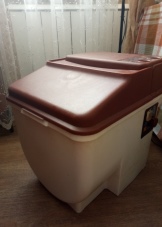
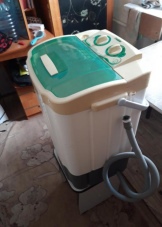
How to use it correctly?
The operation of activator machines of the "Baby" type is very simple and does not cause any difficulties. The main thing is to follow the rules for using the unit, without neglecting safety precautions.
- If the car has just been brought from the balcony in the cold season, then you cannot turn it on right away. The engine should warm up to room temperature, which usually takes 3-4 hours.
- Do not install the unit close to a wall. - it is better to place the machine at a distance of 5-10 cm. This will prevent increased noise associated with vibration of equipment.
- If the model does not have a drain hose, then it should be placed on a wooden lattice or a stool installed in the bath. For greater stability and less vibration, it is advisable to lay a rubberized mat under the bottom of the machine. In this case, the unit must stand very evenly and rest on the base with the entire bottom surface.
- To prevent splashes from falling on the engine, It is recommended to cover the casing with polyethylene without covering the ventilation openings.
- Drain hosed you need to fix the top edge on the machine body, only after that start drawing water.
- After the hot water reaches the desired level, powder is poured into the tank, the laundry is laid, the machine is connected to the network, after which the timer is started. The water temperature for cotton and linen fabrics should not exceed 80 degrees, for silk - 60 degrees, and for viscose and woolen products - 40 degrees. To avoid staining, white items should be washed separately from colored items.
- Between batches of linen the machine must rest for at least 3 minutes.
- After the laundry has been washed the unit is disconnected from the network, the hose is lowered down, the water is drained, then the tank is rinsed. After that, clean water is poured with a temperature of up to 40 degrees, the laundry is laid, the machine is turned on and the timer is started for 2-3 minutes. If the design of the machine provides for spinning, then the laundry is squeezed out in a centrifuge, then hung out to dry. The machine is disconnected from the power supply, washed and wiped dry with a clean cloth.
An overview of using the washing machine is presented in the video.
When using "Baby" you must remember about safety rules.
- Do not leave the device unattended, and also allow small children to visit him.
- Do not heat the water in the tank with a boiler, take the plug and cord with wet hands.
- During washing, do not place the machine on bare ground or on a metal floor.
- It is forbidden to move the machine connected to the mains and filled with water. And also it is impossible to simultaneously touch the body of the unit and grounded objects - heating radiators or water pipes.
- Do not allow the interaction of the plastic parts of the unit with acetone-containing substances and dichloroethane, and also place the machine in close proximity to open flames and heating appliances.
- Store "Baby" should be at a temperature not lower than +5 degrees and relative air humidity not higher than 80%, as well as in the absence of acid vapors and other substances that negatively affect plastic.
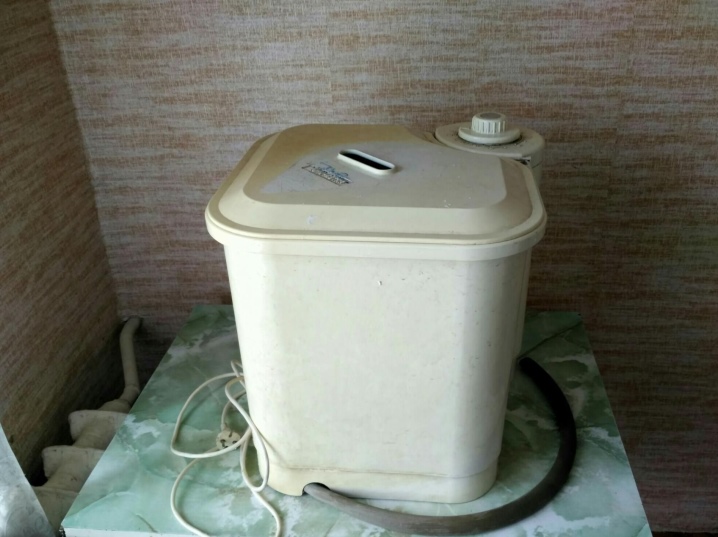
DIY repair
Despite the simple device and the absence of complex units, washing machines such as "Baby" sometimes fail. If an electric motor breaks down, it is unlikely that it will be possible to repair the unit on your own, but it is quite possible to fix the leak, solve the problem with the activator or change the oil seal on your own. To do this, you need to learn how to disassemble the machine and adhere to a certain repair scheme.
Disassembly
Before any repair, the unit is disconnected from the network and installed on a flat, well-lit surface. Before disassembling the machine, experts recommend waiting 5-7 minutes so that the capacitor has time to discharge. Then, from the hole located on the back side of the electric motor casing, remove the plug, align the hole in the impeller with the hole in the casing and insert a screwdriver through it into the engine rotor.
The activator is carefully unscrewed, after which the tank is disconnected. Next, unscrew 6 screws, remove the flange and unscrew the lock nut with a rubber nut, which fix the switch.
Then remove the washers and unscrew the screws that tighten the halves of the casing. These parts are carefully removed to gain access to the motor and other equipment.
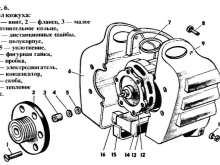

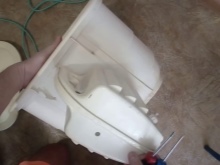
Repairing the activator
One of the common faults of the activator is the violation of its mobility, and, as a result, the stoppage of the washing process. This can happen from overloading the tank, as a result of which the engine starts to work at high speeds, the machine hums, and the blades are stationary. To eliminate this problem, it is enough to unload the tank and let the motor rest, while in more serious cases the disassembly of the activator is required. A common reason for the impeller to stop is the winding of threads and rags on the shaft. To eliminate the malfunction, the activator is removed, and the shaft is cleaned of foreign objects.
It can also become a serious nuisance misalignment of the activator, in which, although he continues to spin, he crumples strongly and even tears the laundry.
At the same time, the machine emits a strong hum and can periodically turn off. To solve the problem of skewing, the activator is removed and the threads are cleaned, after which they are reinstalled in place, controlling its position.
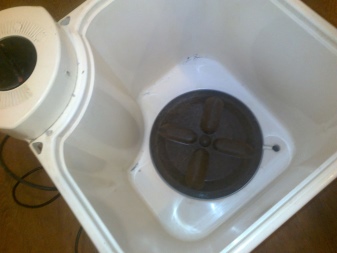
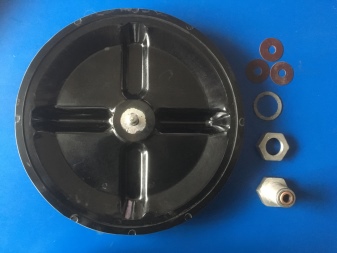
Eliminating leakage
Leaks also sometimes happen when using the "Babies" and cause unpleasant consequences. Leaking water can reach the electric motor and cause a short circuit or even electric shock. Therefore, if a leak is detected, measures must be taken to eliminate it immediately, without ignoring the problem. You need to start by locating the leak: usually it turns out to be a flange assembly or a large O-ring. To do this, the machine is partially disassembled and the rubber is inspected for damage. If defects are found, the part is replaced with a new one.
If the large ring is in order, and the water continues to flow, then disassemble the casing and remove the flange assembly. Then it is disassembled and the rubber bushing and small spring ring, which sometimes does not compress the cuff very well, are inspected. If necessary, replace it with a tighter one or bend it.
Pay attention to the small O-ring, although it does not leak as often. Hose fittings can also leak. In this case, it is required to remove the worn out element and install a new one.
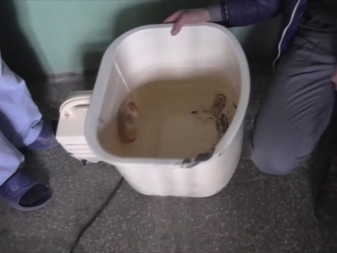

Replacement of oil seals
The oil seal is located between the tank and the engine, and a leak may indicate the need to replace it. Usually, the oil seal is changed along with the activator, since often its sleeve is literally broken by the thread into which the shaft is screwed. The new node is installed in place, then a test connection is made.
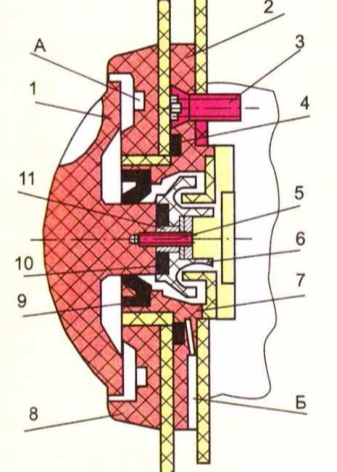
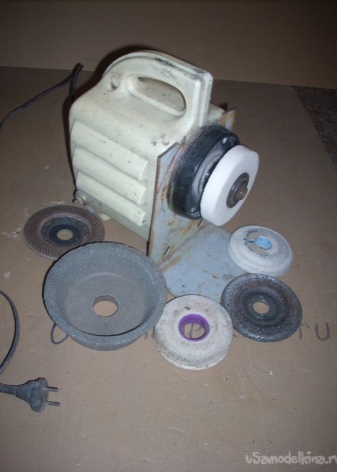
In case of failure of an electric motor, it makes no sense to repair it, since the cost of repairing it is comparable to buying a new "Baby". Fortunately, engines do not break down too often and, if the operating rules are followed, they can last 10 or more years.













Thank you very much!
The comment was sent successfully.